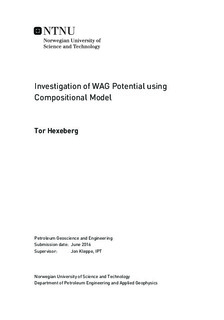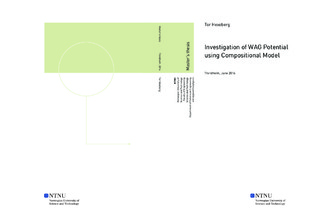| dc.description.abstract | Water-alternating-gas (WAG) injection is a commonly used enhanced oil recovery (EOR) technique, for which the aim is to increase vertical sweep efficiency and reduce mobility of injected fluids by injecting water and gas in cycles. A company, present on the Norwegian continental shelf, is about to initiate a larger study on the potential of WAG injection for one of its operating fields. This paper serves as an introduction to this study. Some of the benefits and potentially problematic issues during WAG injection have been investigated. Simulation results are used to illustrate and confirm what is found in the literature. For this purpose, the author has created a simplified model of the region in the field model, where WAG injection is planned. This makes it possible to look at WAG effects with a less time-consuming simulation model, before running the field scale model provided by the operating company.
Relative permeability hysteresis due to gas trapping, compositional effects during WAG, effects of high permeable top layer, as well as reservoir management in order to maintain the gas-oil-ratio (GOR) at a reasonable level have been investigated through simulation results. | |

